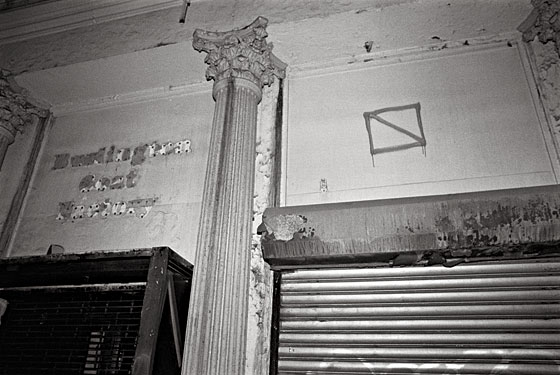
How does an icon get made? Back in the fifth century, the process was quite simple: A monk or artisan would depict Jesus or Mary or one of the saints. The creators and subjects of icons were clearly defined. It’s not that way today.
To the people who oppose it, a mosque near ground zero would symbolize an Islamic triumph at the hallowed ground where around 2,750 people were killed by Islamic terrorists on 9/11. But is that what it would truly signify? The backers of the project have noted that the mosque will actually be a community center, in which a prayer hall will be but one feature (there will also be a swimming pool). The imam who will preside over it is from the moderate mainstream of Islam, and the facility will not be at ground zero but a couple of blocks away.
Many others see it as a provocation. The upshot is that in a city with more than its share of famous buildings, one that doesn’t even exist has already become iconic. It is a modern alchemy of symbols in which the act of destruction doubles as an act of creation. The thing is, the opponents of the community center appear to have failed to understand the double-edged consequences of the preemptive iconoclasm they are trying to achieve.
W.J.T. Mitchell, a visual theorist at the University of Chicago, has noted that monuments and images can gain power by being attacked. The World Trade Center is an example—a pair of ungainly and unloved office buildings acquired a tragic halo once they were destroyed. Mitchell describes it as “not merely the destruction of a pair of buildings, but also the production of an iconic moment. The spectacle of destruction itself became an image that was indelibly engraved on millions of people’s memories.” Of course, the meaning of the image depends on who is gazing upon it: The burning towers are symbols of victory for Islamic extremists.
A similar dynamic occurred in Afghanistan when the Buddhas at Bamiyan were blown up in 2001, turning them into global symbols of Taliban extremism—though in Afghanistan itself, the Taliban proudly disseminated images of the desecration. Previously, only religious scholars had paid much attention to the Buddhas, chiseled into the side of a cliff.
The hydraulic of disruption-sanctification was also present in the artistic domain in 1911, when the Mona Lisa was stolen from the Louvre. Afterward, more people reportedly went to see the empty spot where it had hung than had visited to see the masterpiece when it was there. The painting, stolen by an Italian who had worked at the Louvre, was recovered two years later, and, as Darian Leader wrote in Stealing the Mona Lisa, “Its elevation would be permanently established only by its disappearance. It had to vanish to become a symbol.”
And let us not forget the old Pennsylvania Station, torn down in the mid-sixties to make way for offices and a new Madison Square Garden. The station was topped by 22 5,700-pound marble eagles; its waiting room had been inspired by the baths of Caracalla. As an editorial in the New York Times lamented back then, “We will probably be judged not by the monuments we build but by those we have destroyed.” The building’s demolition helped create the preservation movement.
The lesson, for those who would wish to destroy a worthy item that is embedded with religious, cultural, or political value, is that they’re playing a dangerous game. The politicians and pundits who oppose the Muslim community center are spinning an everyday civic project into a story of the expansion of Islam’s power. The irony is that by trying to destroy the project, these opponents are making it all the more meaningful.
Have good intel? Send tips to intel@nymag.com.
Author’s site: petermaass.com